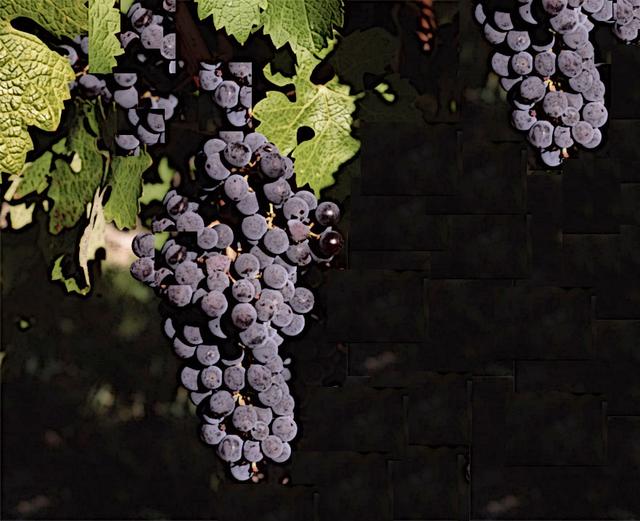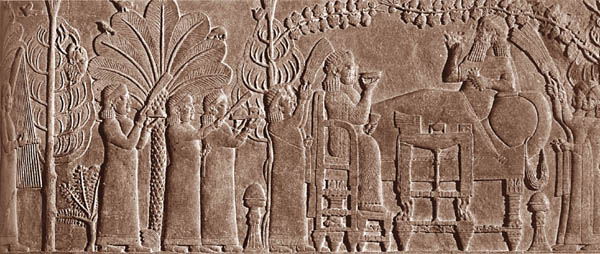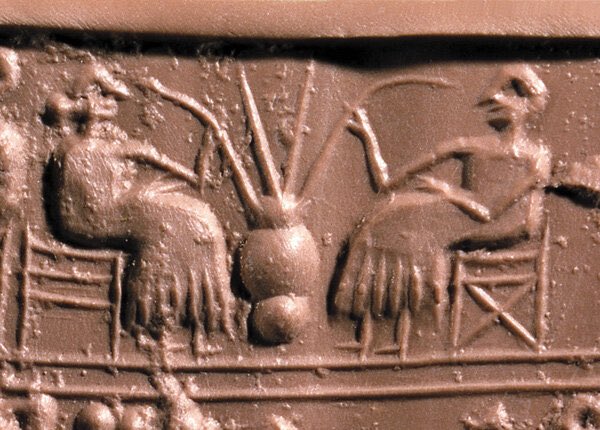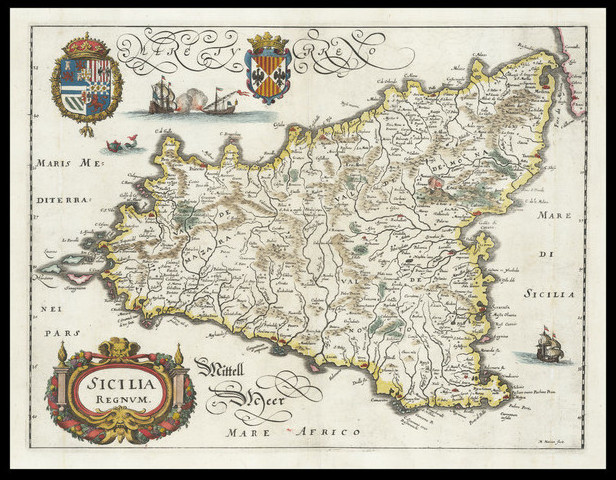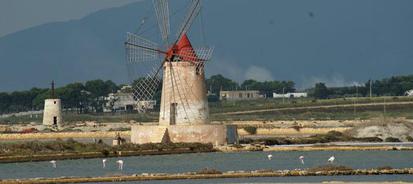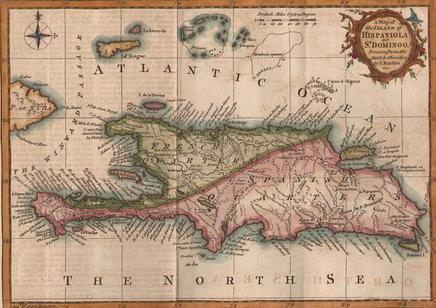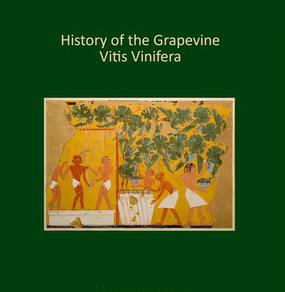History of the Grapevine Vitis Vinifera
82 pages
Sample pages
Vitis Vinifera
Ninety percent of world production is rooted in this stock, with over 1,000 varieties. For red wine the skin and seeds are included in the fermentation, or maceration, causing the juice to turn red. The longer the maceration the darker the wines and more intense the flavor.
Many white wines, including champagne, come from red grapes without the skin; the grapes are crushed and the discarded skins distilled to make grappa.
Because it was rare, wine in Mesopotamia was reserved for the elite and religious ceremonies.
King Ashurbanipal of Assyria and his queen drinking wine, ca 650 BC
Otherwise beer was the common alcoholic drink, where personal straws with filters were used to drink from a communal jug. Some were made of gold or silver, with animal figures that would slide up and down the length of the pole, allowing the users to balance the straw on the side of the pot as they sipped.
Page 10
Page 8
Page 43
ITALY
The origin of the name “Italia” most likely derives from the Greeks during the fifth century bc, at a period where they were into some serious migrating due to overcrowding, especially the Dorians, who named the peninsula in honor of Italus, grandson of Odysseus.
Italy had been drinking wine before the Phoenicians and Greeks arrived on the peninsula. However, their knowledge greatly improved local winemaking techniques.
SICILY
In ancient history we can divide the occupation of Sicily into three parts. The Greeks in the east, the Romans in the north and the Phoenicians/Carthaginians in the southwest.
The distinguishing wine of Sicily is Marsala, on the west side of the island, made from three local grape varieties fortified with a grape brandy. Dry or sweet.
Besides its unique wine, the town of Marsala has one of Europe's oldest salt marshes. Windmills are used to drain water from the basins.
THE NEW WORLD
The earliest vinifera vines were planted in Hispaniola (Haiti/Dominican Republic). When imports dropped for Spanish wines, King Ferdinand II, in 1503, banned local production unless it was for Mass. The ban was ignored.
Around the same time Hernán Cortés arrived on the island in his early twenties, and accompanied Diego Velázquez de Cuéllar on his expeditions.
Missions
As Cortés campaigned northward, he made certain that each Mission had vinifera vines, and encouraged the missionaries to experiment by grafting European grape varieties to indigenous plants. He also made it mandatory for Spanish colonists to plant vineyards if they wanted to acquire land.
Page 73
